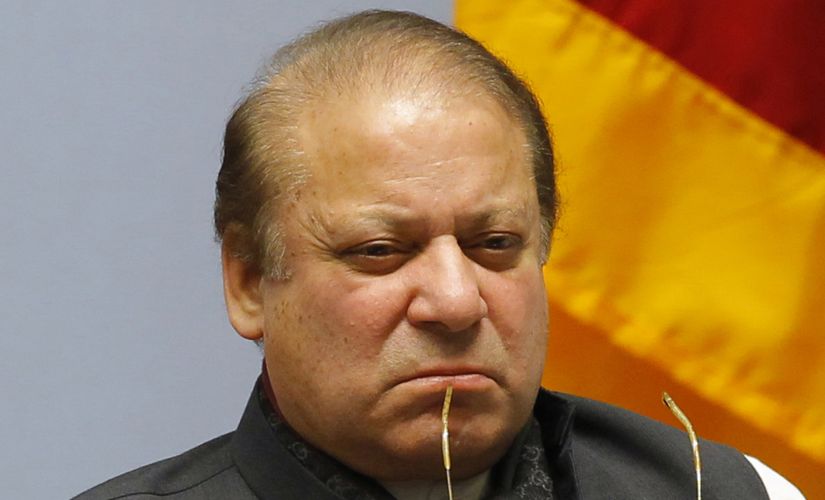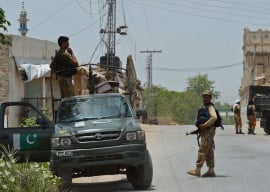
Similarly, whatever factors may be at work, the headline inflation rate has been tamed to around 5%. Spending on the public sector development programme and foreign investments from China are at an all-time high. Some of these achievements have been highlighted by international credit rating agencies which have already dubbed Pakistan to be on the path of sound economic progress.
Panamagate probe: Nation will soon hear good news, says Imran
If you ask independent economists, most of them are unconvinced of these statistics due to issues with data reliability, rising trade deficit and exploding current account deficit. What should be the best criteria to judge the economic performance of PML-N? Can we look at what PML-N promised to the nation due to which it won a comfortable majority in the parliament?
A local think tank, PRIME, has been doing exactly this. Its 9th Manifesto Tracking report has awarded a score of 4.66 in Economic Revival and 5.43 in Energy Security, giving an overall average score of 5.05 to the incumbent government.
The score is based on three parameters: policy (2.5), institutional environment (2.5) and implementation (5). The score of 5.05 is not unimpressive on the surface, but the devil lies in the details. In its manifesto, PML-N promised 89 quantifiable targets. Out of these, only six targets have been partially achieved. The targets were: bringing down budget deficit, bringing down inflation, setting up Export-Import bank, rationalisation of electricity tariffs, blanket ban on CNG stations, and priority to public transport for the use of CNG.
The latest tracking report states that in seven areas, the progress made has been reversed leading to a score of zero. Two of the important reversals are the deterioration of the regulatory environment at the national level and resurgence of the circular debt. During the last six months spanning January-June 2017, the scorecard report indicates progress on 29 goals and decline in 13 goals. The table provides the overview.
It is not difficult to guess what worries the businesses in Pakistan the most. If you guess it is electricity, you are wrong. If you guess it is corruption, you are even further away from reality. If you say it is taxation policy, you are closer to reality. The biggest threat to any business can be a policy which is impossible to predict ie policy instability. Dar, unfortunately, has come to symbolise unpredictability and discretionary power.
Load-shedding to be eliminated by end of Nov this year
The big elephant in the room is of course none of these economic goals- it is the China-Pakistan Economic Corridor (CPEC). As Pakistan Institute of Developmental Economics (PIDE) economist Ali Kemal has rightly analysed, the economic growth that we have witnessed is largely a function of CPEC-related investments. The most important question is whether it will help in securing the economic revival that was promised? Will it help in private sector development?
There are two fundamental assumptions which are at work. One is that energy security will be improved and Pakistani industry will use this newly generated electricity to increase its production and especially exports. However, the opinion is sharply divided on whether the influx of 10,000 megawatts from Chinese IPPs will increase or decrease the average cost of electricity.
Dr Nadia Farooq, an analyst at the government funded CPEC Center of Excellence, maintained that it will bring the average cost down, something which has been disputed. The rationale is that Pakistan has promised 27% Return on Equity to the Chinese IPPs, as compared with the 17% return that forms the basis of tariff for other IPPs.
Coupled with the guarantee of making up cash shortfall exclusively to Chinese IPPs the electricity is likely to become more expensive. Comparatively, the electricity cost is already quite high and thus the demand by at least industrial consumers may not escalate quickly. In the short run, it implies a very huge current account deficit.
If what the President of Rawalpindi Chamber of Commerce and Industry Amer Iqbal said recently about the CPEC and the possibility of the further erosion of Pakistani industrial base is representative of the business sentiment, PML-N faces double jeopardy. Economists perceive CPEC skeptically and the business community, where PML-N’s vote bank is concentrated, views it suspiciously. The CPEC may not be just bad economics; it will be bad politics too.
The writer is the Founder of PRIME Institute, an independent economic policy think tank based in Islamabad
Published in The Express Tribune, July 24th, 2017.
Like Business on Facebook, follow @TribuneBiz on Twitter to stay informed and join in the conversation.




















1713893627-4/Shredded-10,000-yen-bill-(1)1713893627-4-270x192.webp)

1713889672-1/Plastic-waste-(2)1713889672-1-270x192.webp)




















COMMENTS (1)
Comments are moderated and generally will be posted if they are on-topic and not abusive.
For more information, please see our Comments FAQ